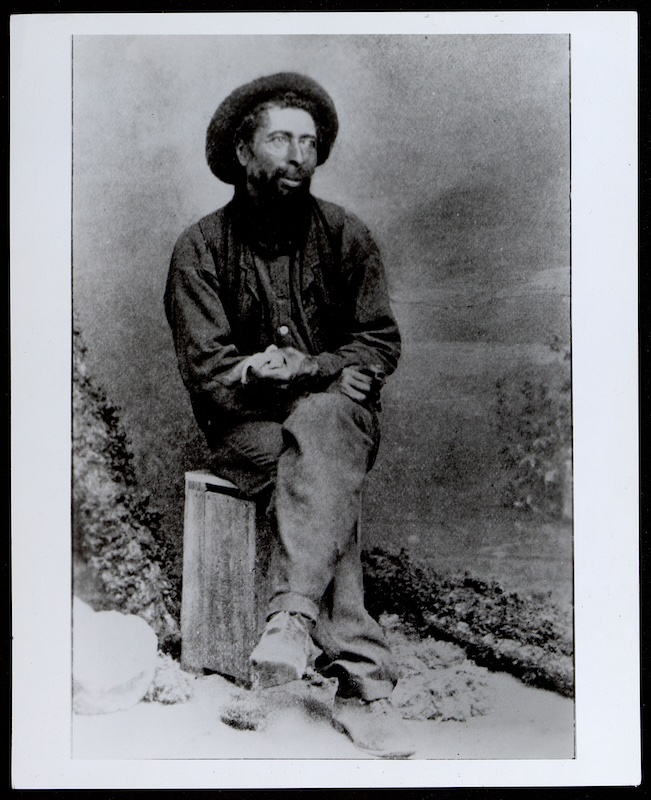
Nathaniel Smith, pioneer and stagecoach driver in Mendocino County, circa 1880-1900. (From the Miriam Matthews Photograph Collection, Open UCLA Collections)
The Kelley House Museum’s upcoming exhibition—March 1st through May 27th— will illuminate the life and times of Nathaniel Smith. This exhibition was researched, and this article written by, Guest Curator, Alexander Wood. His work was made possible by a grant from California Humanities, a partner of the National Endowment for the Humanities.
Nathaniel Smith was a well-known man during his life, but his legacy has diminished with time. His name is certainly present in many histories of the area, but his historical record does not match the sentiment of his obituary that, “no history of Mendocino county would be complete without some reference to him.” The context of his life showcases the economic, ecological, and cultural changes in Mendocino and, more broadly, in California in the second half of the nineteenth century. Smith arrived in Mendocino in the mid-1850s, when the area was home to grizzly bears and Pomo people, and the rivers and streams full of salmon. By the end of his life, locals already feared the consequences of overfishing, and grizzly bears had been nearly wiped out in California.
He watched as the Pomo and relatives of his wife and children were driven from their land. As one of a few African Americans in a rural region of Northern California, Smith endured some of the typical mistreatment of people of color here at the time. His renown was based in part on his racial background, as evidenced by the many mentions of his race and the racist nickname assigned to him in the newspaper. However, most records of Smith prove that his personality and character are what his friends and neighbors remembered most. He was also known for his accomplishments in the many roles he played during his lifetime: hunter, fisherman, teamster, and ferryman.
I began researching Nathaniel Smith for the project initiated by the Kelley House Museum last year. The project’s objective was to uncover the details of Smith’s life in the context of the experiences of people of color in California. Primary historical sources provide the basic information. My research mainly relies on articles in the Mendocino Beacon, the U.S. Census, and other official records. Local archives, including the collections of the Kelley House Museum, the Fort Bragg-Mendocino Coast Historical Society, and the Historical Society of Mendocino County, further aided the project’s research.
The project builds on the research of many others, including Smith’s direct descendant, Arlene Zornes. Reporter Ninetta Eames’ 1892 article, “Staging in the Mendocino Redwoods” from the Overland Monthly and Out West Magazine, is a vibrant source of colorful details and includes direct quotes from Smith. Smith’s history reveals how individuals and families in rural Northern California endured and overcame the societal biases against them. Despite the challenges, Smith succeeded in many professions, owned a home and land, and raised a family.
As my project builds on the research of countless others, I hope it will be used for future interpretations of Smith’s life and African Americans’ contributions to California history.
This project was made possible with support from California Humanities, a partner of the NEH. The exhibit will run from March 1st through May 27th, 2024. The Kelley House Museum is open from 11AM to 3PM Friday through Sunday. If you have a question for the curator, reach out to curator@kelleyhousemuseum.org to make an appointment. Walking tours of the historic district depart from the Kelley House regularly.